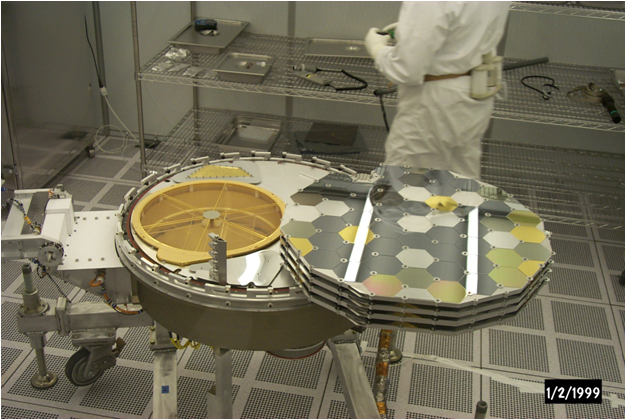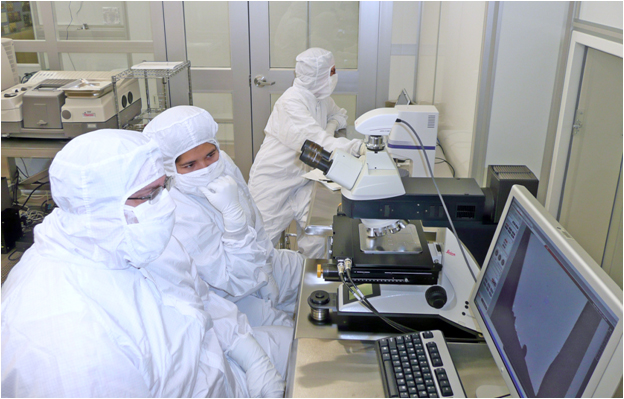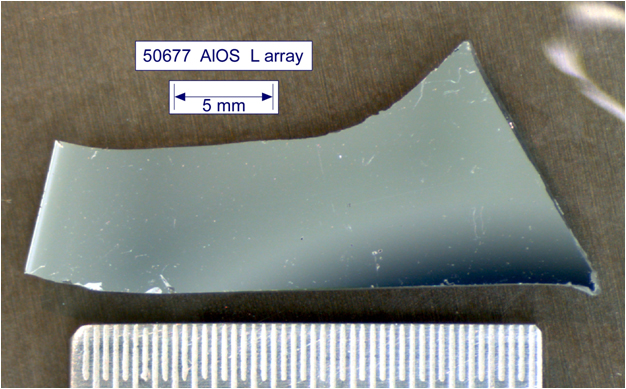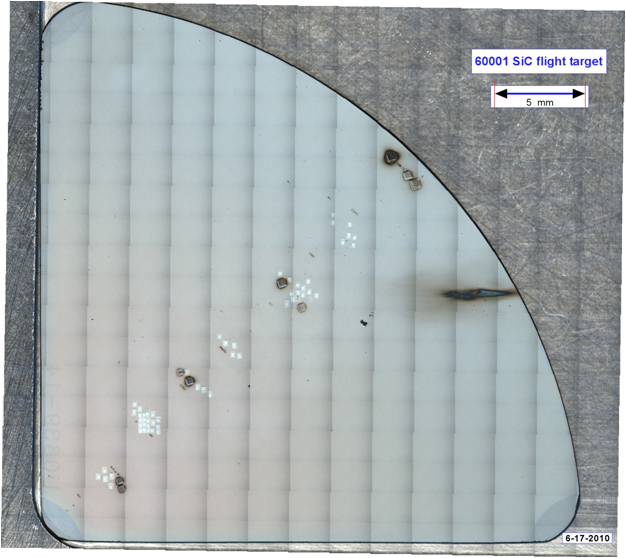Salvaging Genesis Solar Wind Sample Science

Figure 1. Hexagonal polished collectors of pure materials accumulated solar wind from three regimes over a 28 month period at Earth-Sun L1.
When the Genesis Mission returned to Earth, the parachute did not deploy and the return capsule hit the ground at an estimated 300 kph. The crash landing caused the collector canister to break open and expose the collectors to the Earth environment. Many of the collectors were fragmented and contaminated with particulate debris and a molecular film.
However, the early collector design choices (see figure 1) proved useful during the recovery of the capsule and collector fragments. Fifteen very pure and distinct materials were used for collectors, chosen to enable a variety of analyses for specific elements contained in the solar wind. Some of those materials survived the hard landing better than others. For example, sapphire–based collectors survived in larger pieces, and diamond surfaces were more resistant to scratching. Also, the thickness of the hexagonal solar collectors was unique for each solar wind regime. Since collectors were dislodged and fragmented upon the hard landing, a measurement of the collector thickness was the only direct way to categorize the fragments by solar wind regime.
Initial Recovery Processing
After return, a variety of collector cleaning processes were tested to remove the contaminant particles and molecular film. Some collector materials proved more easily cleaned than others. Thus, the variety of collector materials not only provided an analytical redundancy, but also more options for cleaning the surface without disturbing the solar wind that was implanted 40-100 nm below the polished collector.
Flight-like collector reference materials were preserved. These specimens proved crucial as “blanks” for subtracting background components of measured parameters. These reference materials were also used in development of cleaning processes.
Characterization Of Collector Fragments
Despite the collector damage, the collector fragments can be easily identified by optical observation or Fourier Transform Infrared spectroscopy, and a measurement of the wafer thickness (see Characterization of Genesis Samples). Fragments are imaged, assessed for surface condition (figure 2 and figure 3), measured, and served on the sample catalog.

Figure 2. Recovered collector fragments are imaged and measured for the online catalog.

Figure 3. An example from the online catalog is this aluminum-on-sapphire sample.
Cleaning Of Collectors Fragments
Megasonically energized ultrapure water (UPW), which was successfully used to clean the payload prior to launch, was adapted to remove particulate contamination from solar wind collectors. The continuous flow process produces water of 18Ω–cm resistivity (ionic concentrations in the low parts per trillion). To apply UPW cleaning to small irregular collector fragments, a megasonic cleaning head was mounted to a single wafer spin processor. In this configuration a small collector fragment held by a vacuum chuck is spun up to 3000 rpm. Megasonically energized UPW is applied for 30 seconds to 15 minutes, depending on material. Extra spin time effectively dries the collector fragment. Particles greater than 5 µm are efficiently removed, leaving no solvent residue.
A commercial UV lamp device creates a UV ozone cleaning atmosphere which effectively removes the 5 nm film found on some collector fragments. Typical UV exposure times are 30 minutes.
Cleaning performed at the JSC Genesis curation facility is first order cleaning. Members of the science team have developed second round cleaning with strong acids, such as hydrofluoric and aqua regia. JSC curation assists with documentation and logistics for this iterative process with the science community.
Supporting Science
Important science results are emerging from analysis of the Genesis solar wind samples. Recovery efforts have allowed investigators to choose samples and very specific measurement sites on collector samples in order to avoid damaged areas and to make multiple analyses. Figure 4 shows a silicon carbide collector which has been analyzed for 2 different elements by two different research groups.

Figure 4. This mosaic image of a Genesis silicon carbide collector shows the effects of ion beam analyses by two science groups.
